Photo

Tortuga Maya / Mayan turtle statue, Copán, Honduras
88 notes
·
View notes
Photo

Popol Nah, the Council House (Copán, Honduras).
42 notes
·
View notes
Photo

Hieroglyphic Stairway (Copán, Honduras).
Built during the 8th century, it is inscribed with over 2,000 inscriptions recording the history of Copán’s rulers. They begin with the city’s founder, K'inich Yax K'uk’ Mo’ (r. 426 – c. 437), and end with its most famous ruler, Uaxaclajuun Ub'aah K'awiil (r. 695 – 738).
The Hieroglyphic Stairway is 10m wide, 21m long, and has 62 steps, climbing the west side of Structure 10L-26. Large sculptured figures, believed to represent the most important rulers, are situated in the centre of every 12th step. The staircase was built in 710 by Uaxaclajuun Ub'aah K'awiil, and was reinstalled and expanded by K'ak’ Yipyaj Chan K'awiil in 755, in the next phase of the temple. The latter’s portrait appears in Stela M, located at the bottom of the stairs with its associated altar. Remnants of red paint show that the stairs were originally painted.
272 notes
·
View notes
Photo

Acropolis (Copán, Honduras).
This is Copán’s main structural grouping, on the eastern side of the Great Plaza. It overlooks the Copán River, which flows past the city’s eastern border. Over time, the Acropolis was added to and remodelled, with new structures being built over old ones.
In order to study these older structures, archaeologists dig tunnels into the Acropolis. Tombs have been found containing the cinnabar-covered bones of a man, believed to be K'inich Yax K'uk’ Mo (Copán’s first ruler), and of an elderly woman who may have been his widow. Both their tombs are filled with rich offerings, including jade carvings and ceramics.
Another building, the Rosalila Temple, was unearthed in 1991. It was buried almost intact under later buildings.
216 notes
·
View notes
Photo

Mayan ruins near Copán, Honduras
Copán is an archaeological site of the Maya civilization located in the Copán Department of western Honduras, not far from the border with Guatemala. It was the capital city of a major Classic period kingdom from the 5th to 9th centuries AD. The city was located in the extreme southeast of the Mesoamerican cultural region, on the frontier with the Isthmo-Colombian cultural region, and was almost surrounded by non-Maya peoples.
Location: Copán Ruinas, Copán Department, Honduras
Copán Ruinas is a municipality in the Honduran department of Copán. The town, located close to the Guatemalan border, is a major gateway for tourists traveling to the Pre-Columbian ruins of Copán. The Copán ruins house a UN World Heritage site and are renowned for the hieroglyphic staircase, stellae, and museum.
313 notes
·
View notes
Photo
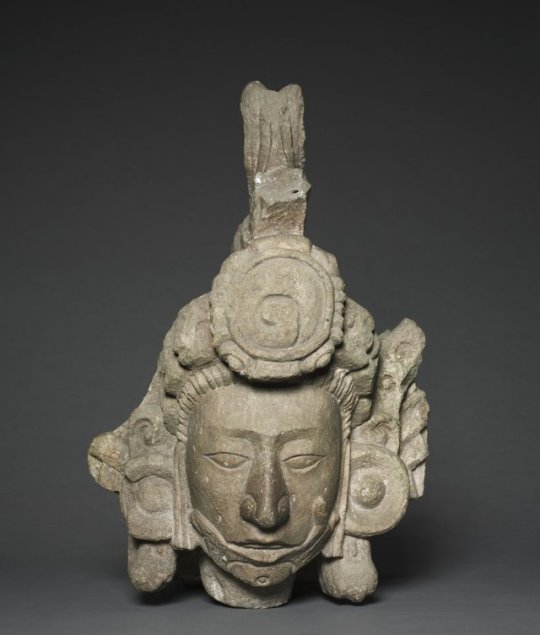



~ Head of a Young Noble.
Place of origin: Honduras, Copán
Culture: Maya style (250-900)
Medium: Stone
401 notes
·
View notes
Text
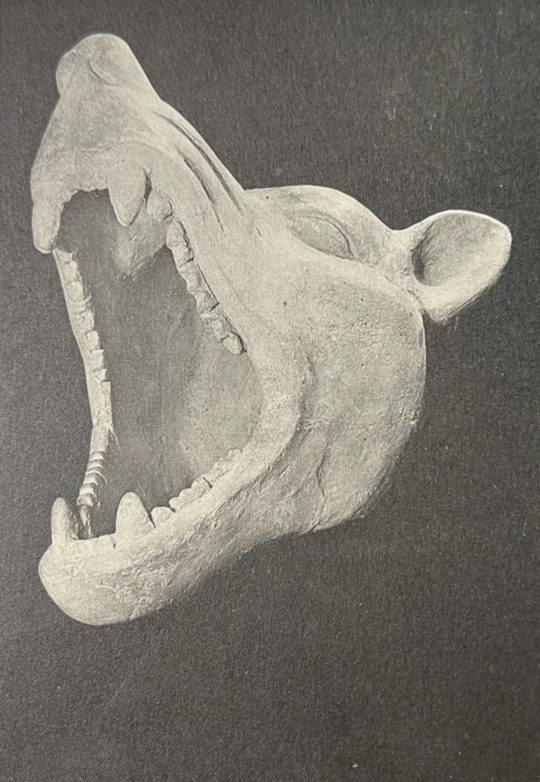
“Dog Head In Pottery” Copan, Honduras c.unknown
68 notes
·
View notes
Photo
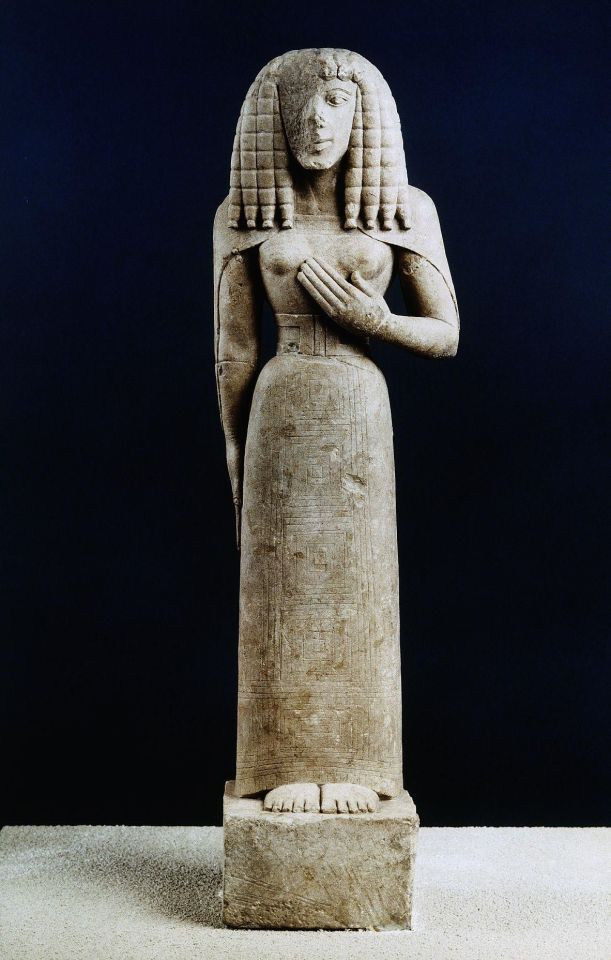
Lady of Auxerre, 650 - 625 BCE
Limestone
2′ 1 1/2′’
Musee du Louvre, Paris
This is one of the earliest Greek stone sculptures. She resembles a maiden in a Daedalic style which was used around the 7th Century BCE. Her triangular face and figure resemble a geometric and abstract pattern.
15 notes
·
View notes
Photo



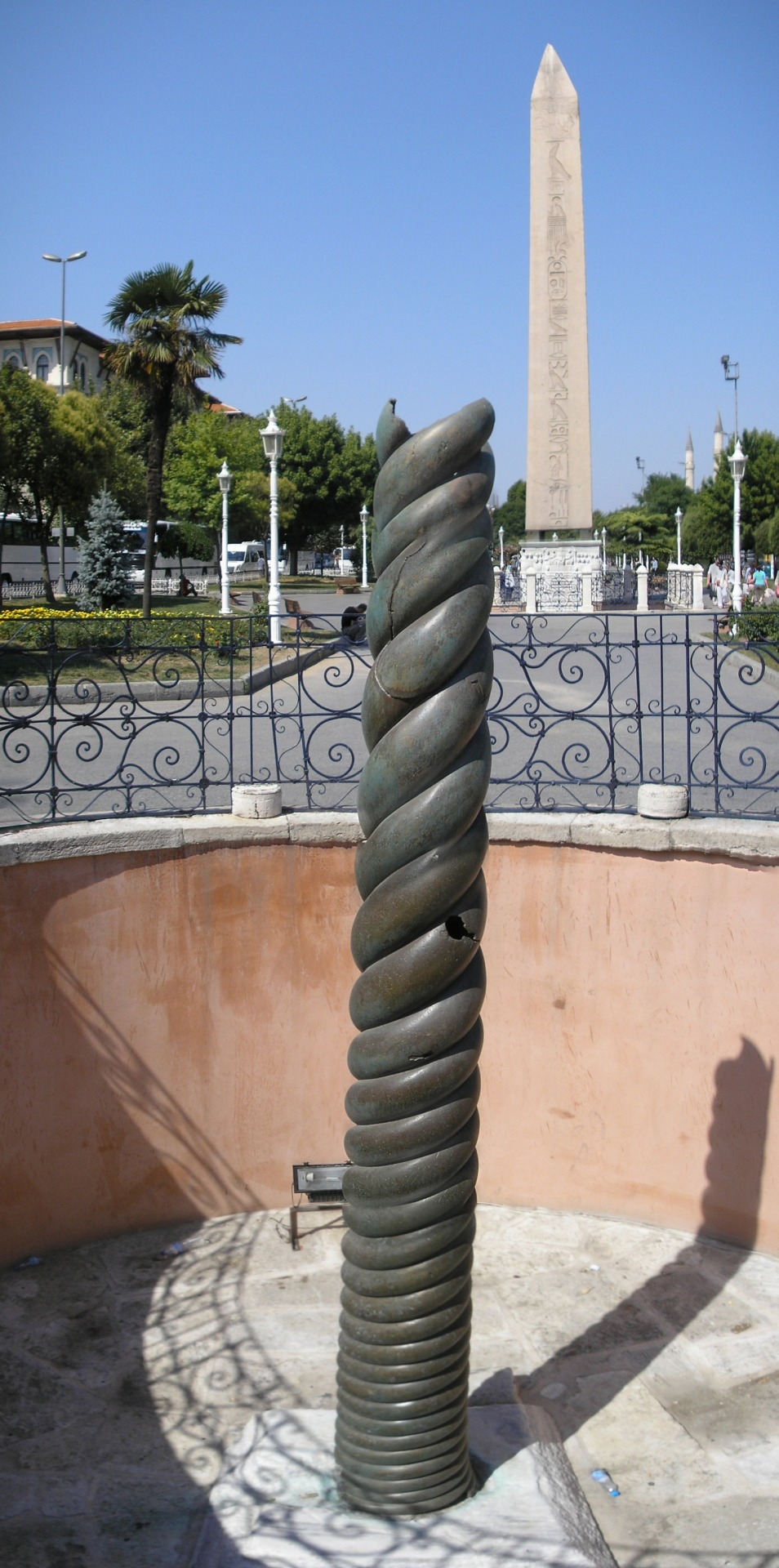
Serpent Column of Delphi
Delphi, Greece
478 BC
8 m.
The Serpent Column, also known as the Serpentine Column, Plataean Tripod or Delphi Tripod, is an ancient bronze column. It is part of an ancient Greek sacrificial tripod, originally in Delphi and relocated to Constantinople by Constantine I the Great in 324. It was built to commemorate the Greeks who fought and defeated the Persian Empire at the Battle of Plataea (479 BC). The serpent heads of the 8-metre high column remained intact until the end of the 17th century.
Together with its original golden tripod and bowl (both long missing), it constituted a trophy, or offering, dedicated to Apollo at Delphi. This offering was made in the spring of 478 BC, several months after the defeat of the Persian army in the Battle of Plataea (August 479 BC) by those Greek city-states in alliance against the Persian invasion of mainland Greece.
Pictured are two reconstruction proposals and pictures of the actual column.
445 notes
·
View notes
Text

A collection of ancient silver coinage from the Greek World (Mainland Greece, Magna Graecia and Asia Minor).
from 5th Century BCE to 1st Century BCE
The unknown Wikimedia Commons/Pictures not [yet?] published in Wikipedia
85 notes
·
View notes
Text
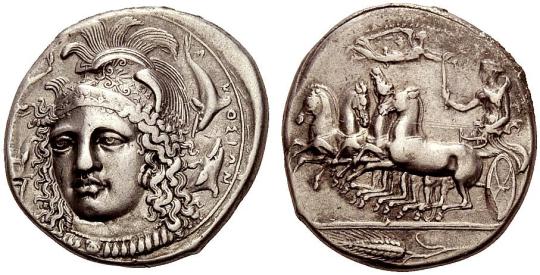
Silver tetradrachm of Syracuse, signed by Eukleidas and minted ca. 405-400 BCE. On the obverse, the head of Athena, surrounded by dolphins and the inscription ΣΥ – Ρ – ΑΚ – ΟΣΙΩΝ ("Of the Syracusans"); on the reverse, a female charioteer drives a quadriga (four-horse chariot) while Nike crowns her. Photo credit: Exekias/Wikimedia Commons.
362 notes
·
View notes





